Art & Exhibitions
Berlin Gallery Beat: Must-See Shows in June
Jeremy Shaw's future humans and more reviews of Berlin's best.
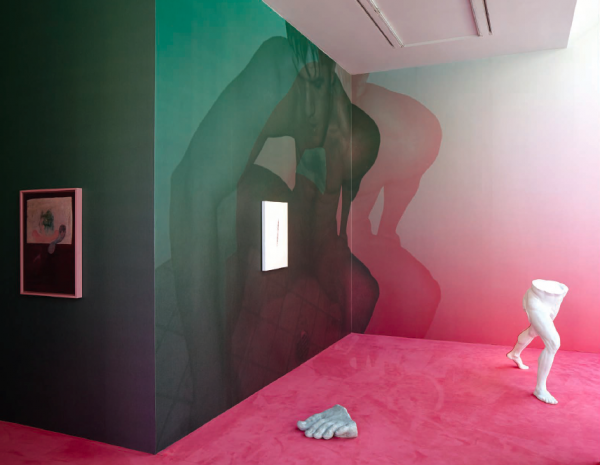
Jeremy Shaw's future humans and more reviews of Berlin's best.

Alexander Forbes

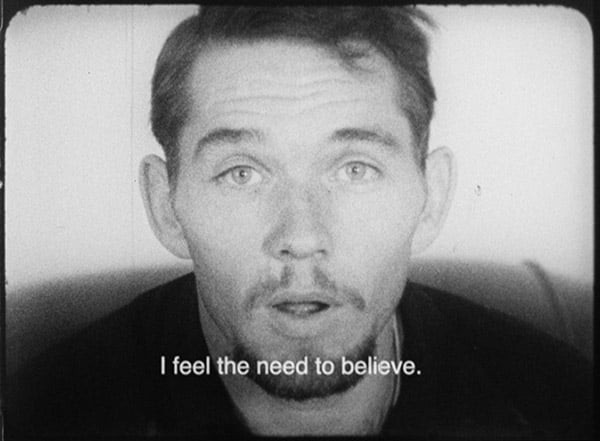
Jeremy Shaw, Quickeners (2014)
Photo: Courtesy Johann Koenig, Berlin
Jeremy Shaw, Quickeners, Johann Koenig. Through June 28.
Four-hundred years after human beings become extinct, a new cyborgic species of so-called Quantum Humans has taken over the earth. The species is immortal, having transcended biological existence, and tied together through a system of total knowledge called the Hive. Deep in what was once the Appalachia region of the Americas (now referred to as Area 23) a growing number of the Quantum Humans have begun to revert to human traits, feeling, as one says, “in both physical and mental ways…the need to believe in something that is not of the Hive.” Known as “Quickeners” these acute sufferers of what’s called Human Atavist Syndrome (H.A.S.) revert to activities long discarded as superfluous to existence. Notably, fields of cultural production such as music and dance fall within the realm, but the core is an entity so foreign and illogical to the Quantum Human narrator, it can’t quite be named: religion and serpent worship.
Though futuristic in theme, Shaw’s truly fantastic 36-minute-long film takes archival footage for its visual basis, a documentary from the 1960s about a cult of West Virginian revivalists who handled venomous snakes as part of their tongue-speaking, gyrating religious practice. The audio has become corrupted—the narrator says the resulting garbled language is a result of H.A.S. interfering in the Quickeners’ ability to update their language mechanisms—with subtitles giving a new, post-human take on the footage, interviewees in various stages of H.A.S. describing their Quickenings, moments of transcendent experience. The film whacks at the Zeitgeist to great resonance. It places its viewers from the urban liberal elite as the film’s narrator, unable to reckon with those who stray from our near-religious affiliation to scientific knowledge and positivist thought. And, it powerfully posits a future in which our completion of the great encyclopedic project that is human knowledge production and scientific understanding is complete, leaving those future generations, or at least the Quickeners among them, to return to the supernatural—even if their rationally programed systems tell them it can’t exist—as a means of self-actualization.
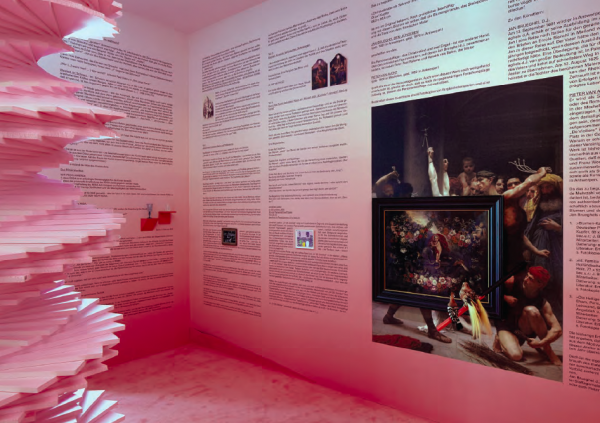
Michael Müller, Installation View, Was nennt sich Kunst, was heißt uns wahrsein? (2014), Galerie Thomas Schulte
Photo: Courtesy Galerie Thomas Schlute
Michael Müller, Was nennt sich Kunst, was heißt uns wahrsein?, Thomas Schulte. Through July.
Pepto-Bismol is about the most accurate color qualification one might make for the walls and carpeting that make up this eleventh part of Müller’s nearly two-year-long exhibition cycle that has dominated the gallery program since spring 2013 and continues throughout this summer and fall. The results are far from nauseating, however. As a whole, the cycle has centered itself around a body of works and shows, which respond to Robert Musil’s The Man Without Qualities. Pursuant to the exhibition’s titular question, “What is considered art? What does it mean to be true to oneself?” this latest effort is thoroughly meta in orientation. The walls—where not hung with artworks, which cheekily approximate just about every trend in contemporary art practice—are printed with a treatise written and compiled by Müller on the nature of art (and a bit of metaphysics). Some of the text is serious theoretical fodder. (It recalls the artist’s previous text-heavy intellectual history of a show, Das Scheitern der Oberfläche (The Failure of the Surface) (2011).) Most, like the so-called “PINK Manifesto” is very tongue in cheek: “1. PINK represents an absolute necessity for art. / 2. The universal perception of PINK must be passed on.” Many of the works on view, if one can see them as elements discreet from the installation’s whole, have shown up in at least one of the cycle’s previous exhibitions. They range from repros of Old Masters to a cartoony painting with the Nietzsche title The Gay Science scrawled along the bottom left, from abstract ceramics to a Louis Vuitton duffel, from a 35mm film of a grey rock, near-perfectly bisected by a white fissure to a taxidermy swan splayed out on its back. The result is something like a crazy collector’s too-small private museum—the effect is helped along by the fact that viewers are asked to take off their shoes before stepping into gallery—one that, despite its modest scale could well be roamed for many days on end.
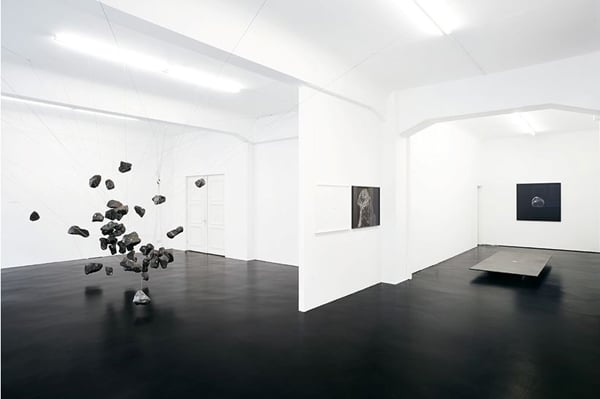
Felix Kiessling, Ausdehnung, Installation view 2014
Photo: Courtesy Alexander Levy
Felix Kiessling, Ausdehnung, Alexander Levy. Through June 21.
Kiessling’s third show at the gallery marks a leap forward in maturity for the young artist-to-watch. Questions of perspective and place play a central role in the exhibition. Most clearly, the theme comes forth in the show’s central, site-specific installation, Weltwasserspiegelsenkung (2014) which sees around a ton of stones from the riverbed of Hamburg’s Elbe suspended in mid air and a measurement that accounts to the corresponding drop in water level their removal caused at a pier in New York City, 6.525778628282996×10-16m, printed on the wall. Due to static limitations of Levy’s gallery building the stones create a form redolent of a molecule with metal wires stretching to far corners of the room—placing them in a neat group on the floor would have caused it to collapse. But, it’s a form that ties directly to the other works on view, electromagnetic scans of grains of sand and minute pebbles taken from geographical endpoints of land from Denmark to Ethiopia and beyond. Though highly technical and masculine in execution, the show brings forth a poetic and universal vision of the binary: cause/effect, begin/end.
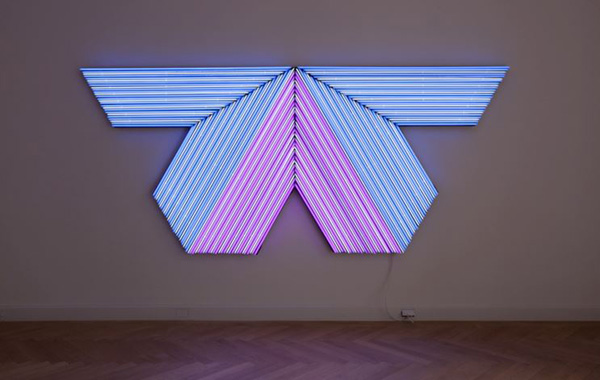
Bertrand Lavier, Black Adder II (2005)
Photo: Courtesy Galerie Kewenig, Berlin
Bertrand Lavier, Medley, Kewenig Galerie. Extended through September 5.
Scanning Lavier’s wide ranging output at this first exhibition in Kewenig’s Berlin space, one would be forgiven for not initially getting what the artist is up to. There are paintings, a neon, wall-mounted readymade sculptures, and light works. But the key is quite simple. Formally trained not as an artist but as a horticulturalist, Lavier’s practice could be best characterized as an artistic exploration of cross-breeding. What happens when you cover every inch of a grand piano in thick paint of exactly the color underneath it as in Bechstein (2013)? Does a leaf blower add any particular qualities to a gaudy art deco sideboard when both are hung on a wall as in Husqvarna / Art deco (2012)? Are the paintings portrayed in a Micky Mouse cartoon any good when created in real life? The works’ art historical redolence from Magritte to Duchamp comes quickly to the fore, made all the better due to the fact that Lavier seems to have so much fun achieving it.